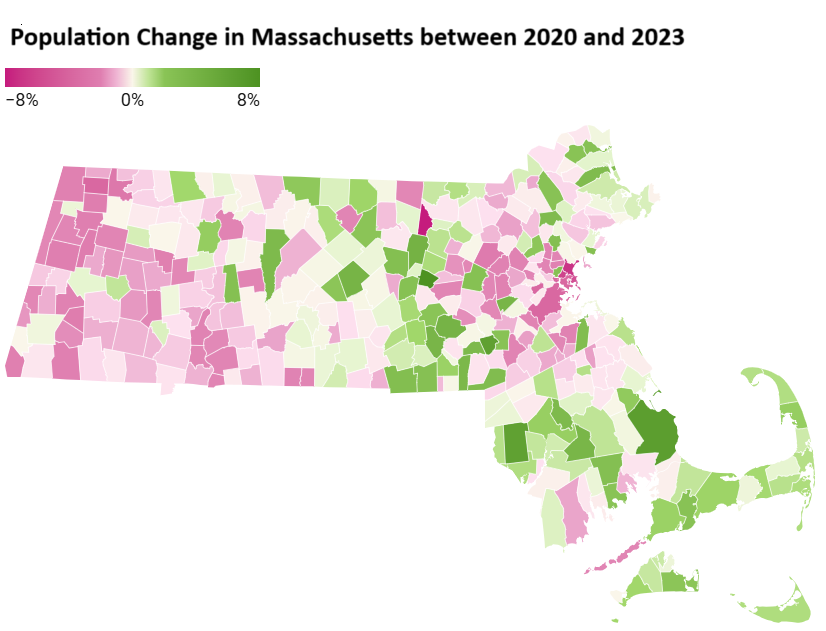With almost 60% of the 351 municipalities in Massachusetts reporting decreasing population, essential services such as roadways, public buildings, and broadband internet access are an increased drain on state resources. The 2024 U.S. Census numbers confirm the shifts in population, displaying how a shrinking tax base leads to difficulties in sustaining public goods and services. Officials are ringing alarm bells about the financial implications of this trend as federal funding is often distributed on a per capita basis, potentially reducing resources for these municipalities.
A 2021 report from the Office of State Auditor Suzanne M. Bump highlights the challenges Western Massachusetts communities face in maintaining public infrastructure. These difficulties are likely to worsen as Western Massachusetts counties have ranked at the bottom for state population growth over the past decade, according to Census data. Below is a map showing towns gaining and losing population, with those gaining population in green and those losing population in pink.

Hampshire County grew only 2.7%, Hampden County grew 0.5%, while Franklin and Berkshire counties lost residents compared to the top population gainers at 8% growth. Among cities, Holyoke experienced the largest population decline, followed by Pittsfield and North Adams.
The report calls for a rural rescue plan, urging increased Chapter 90 funding and the creation of a public infrastructure agency. The Chapter 90 program provides funding to municipalities to implement capital improvements on public services, with every municipality getting an allocation from the total program dollars. The traditional Chapter 90 allocation formula is based on local road mileage (58.33%), population (20.83%), and employment (20.83%).
Some suggest that highlighting regional assets could help reverse the population trend by the 2030 Census. Administrators stress the need to make their communities more attractive to new residents by ensuring adequate facilities for existing populations. In 2021, acting Mayor of Holyoke, Ted Murphy, expressed his surprise but indicated he is not too worried.
“My concern is to take care of the population that is here and try to make sure that they are getting the services they need and hopefully by doing that, it makes the city more attractive to others,” Murphy said.
Others expressed more concern. Chairman of the select board in Charlemont, Beth Bandy, talks about reevaluating budgets, with municipal services taking a hit to preserve funding for public schools. “We end up having to cut a lot of services and be as lean as possible,” Bandy said.
The deteriorating condition of roads, bridges, and highways remains a major concern. While Chapter 90 funds are intended to support transportation infrastructure, the allocation system disproportionately benefits more populated areas, leaving Western Massachusetts with crumbling roadways and stalled development. Massachusetts overall may have grown, however, much of this growth has been driven by Boston and its surrounding areas, growing at rates between 3 and 8 percent.
The report identifies a clear need for a structured and sustained investment strategy to ensure public infrastructure in all regions receives equitable resources. Without decisive action, Western Massachusetts will continue to fall behind, exacerbating regional disparities and limiting future growth.
References: